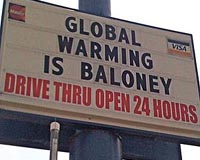| . |  |
. |
Southampton UK (SPX) Feb 08, 2010 The notion that scientists understand how changes in Earth's orbit affect climate well enough for estimating long-term natural climate trends that underlie any anthropogenic climate change is challenged by findings published this week. The new research was conducted by a team led by Professor Eelco Rohling of the University of Southampton's School of Ocean and Earth Science hosted at the National Oceanography Centre, Southampton. "Understanding how climate has responded to past change should help reveal how human activities may have affected, or will affect, Earth's climate. One approach for this is to study past interglacials, the warm periods between glacial periods within an ice age," said Rohling. He continued: "Note that we have here focused on the long-term natural climate trends that are related to changes in Earth's orbit around the Sun. Our study is therefore relevant to the long-term climate future, and not so much for the next decades or century." The team, which included scientists from the Universities of Tuebingen (Germany) and Bristol, compared the current warm interglacial period with one 400,000 years ago (marine isotope stage 11, or MIS-11). Many aspects of the Earth-Sun orbital configuration during MIS-11 were similar to those of the current interglacial. For this reason, MIS-11 is often considered as a potential analogue for future climate development in the absence of human influence. Previous studies had used the analogy to suggest that the current interglacial should have ended 2-2.5 thousand years ago. So why has it remained so warm? According to the'anthropogenic hypothesis', long-term climate impacts of man's deforestation activities and early methane and carbon dioxide emissions have artificially held us in warm interglacial conditions, which have persisted since the end of the Pleistocene, about 11 400 years ago. To address this issue, the researchers used a new high-resolution record of sea levels, which reflect ice volume. This record, which is continuous through both interglacials, is based on the 'Red Sea method' developed by Rohling. Water passes between the Red Sea and the open ocean only through the shallow Strait of Bab-el-Mandab, which narrows as sea levels drop, reducing water exchange. Evaporation within the Red Sea increases its salinity, or saltiness, and changes the relative abundance of stable oxygen isotopes. By analysing oxygen isotope ratios in tiny marine creatures called foraminiferans preserved in sediments that were deposited at the bottom of the Red Sea, the scientists reconstructed past sea levels, which were corroborated by comparison with the fossilised remains of coral reefs. The researchers found that the current interglacial has indeed lasted some 2.0??.5 millennia longer than predicted by the currently dominant theory for the way in which orbital changes control the ice-age cycles. This theory is based on the intensity of solar radiation reaching the Earth at latitude 65 degrees North on 21 June, the northern hemisphere Summer solstice. But the anomaly vanished when the researchers considered a rival theory, which looks at the amount of solar energy reaching the Earth the same latitude during the summer months. Under this theory, sea levels could remain high for another two thousand years or so, even without greenhouse warming. "Future research should more precisely narrow down the influence of orbital changes on climate," said Rohling: "This is crucial for a better understanding of underlying natural climate trends over long, millennial timescales. And that is essential for a better understanding of any potential long-term impacts on climate due to man's activities." The study was funded by the United Kingdom's Natural Environment Council and the German Science Foundation. Publication: Rohling, E.J., et al., Comparison between Holocene and Marine Isotope Stage-11 sea-level histories. Earth and Planetary Science Letters (published online 2010). doi:10.1016/j.epsl.2009.12.054
Share This Article With Planet Earth
Related Links National Oceanography Centre Climate Science News - Modeling, Mitigation Adaptation
 American Opinion Cools On Global Warming
American Opinion Cools On Global WarmingFairfax VA (SPX) Feb 08, 2010 Public concern about global warming has dropped sharply since the fall of 2008, according to the results of a national survey released by researchers at Yale and George Mason universities. The survey found: + Only 50 percent of Americans now say they are "somewhat" or "very worried" about global warming, a 13-point decrease. + The percentage of Americans who think global warmin ... read more |
|
| The content herein, unless otherwise known to be public domain, are Copyright 1995-2010 - SpaceDaily. AFP and UPI Wire Stories are copyright Agence France-Presse and United Press International. ESA Portal Reports are copyright European Space Agency. All NASA sourced material is public domain. Additional copyrights may apply in whole or part to other bona fide parties. Advertising does not imply endorsement,agreement or approval of any opinions, statements or information provided by SpaceDaily on any Web page published or hosted by SpaceDaily. Privacy Statement |